Ethiopia, Nigeria, others in continental drought-tolerant maize initiative
The Drought Tolerant Maize for Africa (DTMA) Project has contributed to a stronger food system in 13 countries in sub-Saharan Africa, through more than 200 improved maize varieties to help farmers cope with climate change and low-fertility soils through collaboration.
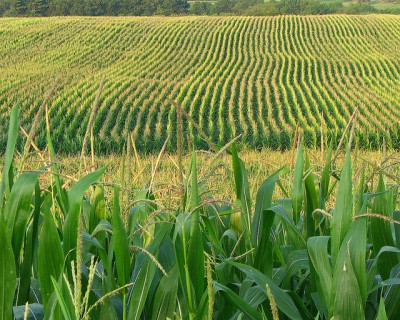
Partners and funders of the Drought Tolerant Maize for Africa (DTMA) Project will on Monday September 14, 2015 convene in Addis Ababa, Ethiopia, to take stock of the project. DTMA concludes its work in Africa after eight years of work on improved drought-tolerant maize, to help maize farmers in sub-Saharan Africa mitigate drought.
“Africa’s food security faces a host of challenges, but undoubtedly, drought is the most devastating challenge because our farmers rely on rains to grow their food. The work undertaken by DTMA has created significant impacts. However, several challenges remain,” said Dr. B.M. Prasanna, Director of the International Maize and Wheat Improvement Centre’s (CIMMYT) Global Maize Programme as well as the CGIAR Research Programme on MAIZE. “Our work continues in sub-Saharan Africa to ensure farmers can access improved maize seed with drought tolerance and other relevant traits that contribute to increased and stable yields,” he added.
The four-day event will be officially opened by, among others, Dr. Fentahun Mengistu, the Director General of the Ethiopian Institute of Agricultural Research (EIAR). The institute has been very instrumental in transforming maize productivity in Ethiopia, which has doubled in less than two decades. Maize now ranks first among cereals for production, and second in area planted.
The meeting will reflect on the project’s achievements in some of Africa’s breadbasket countries. DTMA has released more than 200 drought-tolerant maize varieties that perform significantly better under moderate drought compared to varieties already on the market, while yielding at par with – or better – than these existing varieties when there is no drought. DTMA varieties include hybrids that yield, on average, 15 percent more than widely grown commercial hybrids, giving farmers much higher yield regardless of climatic constraints – in good years or in bad years.
More than two million farmers have acquired and grown the new drought-tolerant varieties in DTMA target countries, including Ethiopia: the 13 DTMA target countries are Angola, Benin, Ethiopia, Ghana, Kenya, Malawi, Mali, Mozambique, Nigeria, Tanzania, Uganda, Zambia and Zimbabwe. Of the 11 varieties released in Ethiopia by DTMA, six are high-yielding hybrids that will contribute to improving food security for the more than nine million smallholder households currently growing maize for food and income.
DTMA has benefited from, and drawn on, rich partnerships with private and public institutions. In fact, the increased maize production noted in the past few years in these countries has in part been a result of concerted efforts by national research organizations, seed companies, and CIMMYT’s sister international agricultural research centers – particularly the International Institute of Tropical Agriculture (IITA) – that has led DTMA work in western Africa.
The meeting will also review the progress made under the Improved Maize for African Soils (IMAS) project, as IMAS turns a new corner beginning in 2016 (see DT Maize, last story on page 4). Modeled along similar lines as DTMA – albeit on a smaller scale – IMAS and DTMA have worked together to amplify benefits for farmers by stacking both drought tolerance and nitrogen-use efficiency into a single variety where possible.
This internal and external collaboration will continue to be instrumental in the next phase of maize research and development, as CIMMYT and its partners work to ensure farmers have access to these improved varieties. There will be special emphasis on drought-tolerant and nitrogen-efficient varieties, which are helping farmers, cope not only with drought, but also with the challenge of poor soil fertility. Meeting the current demand for – and improving access to – these improved high-yielding seeds will be CIMMYT’s primary focus for the next five years.
To achieve this, CIMMYT is working with seed companies through a new project, Drought Tolerant Maize for Africa Seed Scaling (DTMASS), to produce close to 12,000 metric tons of certified seed for approximately 400,000 households – or 2.5 million people across seven countries (Ethiopia, Kenya, Malawi, Mozambique, Tanzania, Uganda and Zambia).
“The success of DTMA goes beyond the breeding work. Our work now is to ensure that maize farmers benefit from the seed that was developed with them in mind. Getting the drought- tolerant maize and other improved seeds to the farmers is a critical step that will ultimately crown the success of our work for the last eight years,” said Dr. Tsedeke Abate, DTMA and DTMASS Project Leader.
Maize production in Africa is growing rapidly, making maize the most widely cultivated crop in the continent, and a staple food for more than 300 million people. Giving farmers improved seed choices that will increase their maize yields is a guaranteed pathway to strengthening Africa’s food security. The maize story for Africa’s breadbasket countries is changing for the better, and DTMA and IMAS have been an integral part of this transformative narrative.
Shell: Implementing UNEP report requires long-term sustainability
The Shell Petroleum Development Company of Nigeria (SPDC) Joint Venture has said that ensuring long-term sustainability is a much bigger challenge of tackling the environmental contamination within Ogoniland – in the context of the implementation of the United Nations Environment Programme (UNEP) report.
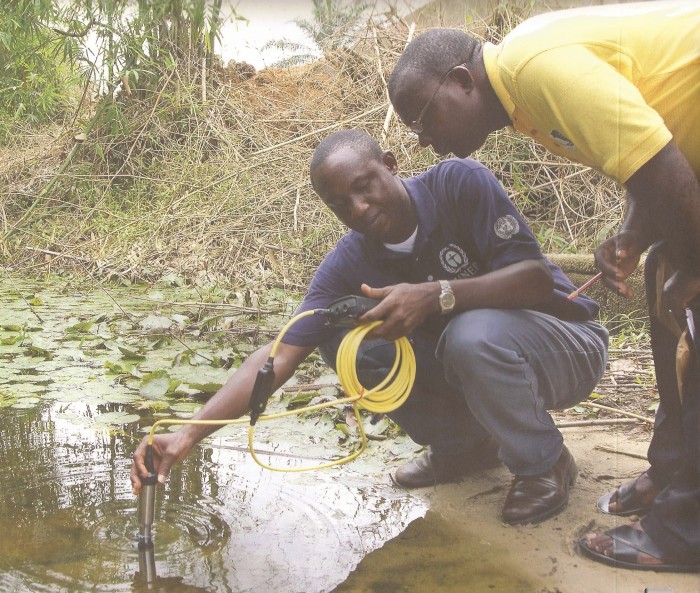
General Manager, External Relations, Igo Weli, disclosed on Friday in Lagos at a Media Roundtable that, as the UNEP report stated, treating the problem of environmental contamination within Ogoniland merely as a technical clean-up exercise will ultimately lead to failure. He added that ensuring long-term sustainability would require coordinated and collaborative action from all stakeholders.
“This must include putting an end to the widespread pipeline sabotage, crude oil theft and illegal refining that are the main causes of environmental damage in Ogoniland and the wider Niger Delta today. Shell Companies in Nigeria will continue to be at the forefront engaging interested stakeholders and seeking sustainable innovative ways to resolve the problem,” he stated.
He commended President Muhammadu Buhari for setting up governance structures for implementation of the UNEP report, saying: “We are greatly encouraged by the positive and constructive response from representatives of the community, Niger Delta NGOs and civil society. This is an important step forward and SPDC is determined to play its part in maintaining the momentum.”
Published in August 2011, the UNEP report makes recommendations to the government, the oil and gas industry and communities to begin a comprehensive cleanup of Ogoniland, restore polluted environments and put an end to all forms of ongoing oil contamination in the region.
Weli adds that SPDC JV set up the Ogoni Restoration Project Team as a direct response to the UNEP report release, working with government on emergency measures and all actions directed at it. According to him, SPDC has initiated action to implement all the 22 actions directed to it by the UNEP report.
His words: “Sixteen actions have been completed, five actions are currently ongoing (such as relocation of right-of-way encroachers, decommissioning plan) and one action is pending (SPDC contribution to the $1 billion Ogoni Restoration Fund).”
On remediation, he stressed that, out of the 470 incidents documented along SPDC JV right-of-way in Ogoniland, 368 had been remediated, 32 at various stages and 70 outstanding (of which 40 are in Bodo).
“We’ve completed the the physical verification of assets in Ogoniland covering delivery and flowlines, manifolds, flow stations, compressor stations, gas plants and burrow pits,” he noted.
On water project, Weli stressed that SPDC JV funded a regional water supply project at Eleme which provides access to potable water for about 30,000 indigenes across five clans from 103 outlets.
“This is being expanded by the Rivers State Government to include more outlets,” he added, pointing out that, regarding the health outreach, the organisation conducted primary healthcare outreach to the communities through SPDC’s Health-In-Motion programme, where about 35,000 adults and 15,000 children benefitted from the outreach.
“Regarding alternative livelihood, we executed alternative livelihood programme (LiveWIRE) for 105 Ogoni youths, provided start-up grants to the trainees, most of whom have started businesses. Monitoring of the LiveWIRE beneficiaries is ongoing.
“On grassroots campaign, we championed grassroots environmental campaign in partnership with the River State Ministry of Environment, NOSDRA and NGOs to deepen awareness on the ills of illegal bunkering and oil theft. Twelve town-hall sessions were held across the four local government areas yearly. About 11,000 participants recorded from 2014 to date.”
Floods kill 11, destroy farmlands in Sokoto, Kebbi, Zamfara
No fewer than 11 persons were killed by floods in Sokoto and Zamfara States this year, the National Emergency Management Agency (NEMA) has said.
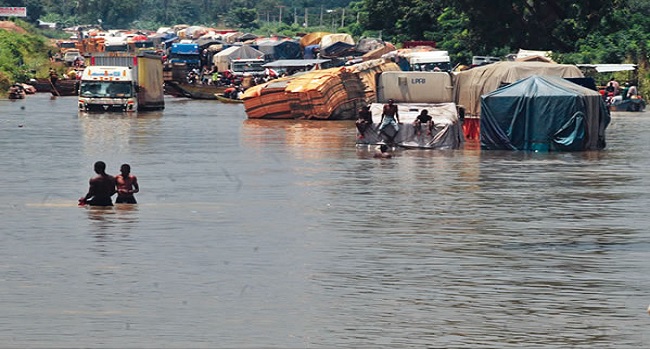
Thickman Tanimu, the Deputy Head of the Sokoto Zonal Operations Office of NEMA, said 10 of the victims died in Zamfara State, while a seven-year-old boy died at Kuchi village in Kebbe Local Government Area of Sokoto State.
Tanimu said on Friday in Sokoto while giving update of damages caused by floods in Sokoto, Kebbi and Zamfara States, that more than 86,710 hectares, valued N1.58 billion, were destroyed in the three states.
According to him, a total of 20,477 homes were also affected, rendering about 50,000 people homeless. He said the flood affected eight out of the 14 local government areas in Zamafara State, which included Shinkafi, Talata Mafara, Gusau, Anka, Tsafe, Bungudu, Zurmi and Maradun.
The official explained that 8,540 houses and 6,450 hectares of farmland valued at N260 million were destroyed in the affected areas in the state.
Tanimu further said 11 out of the 23 local government areas in Sokoto State were affected by the flood, while two communities in Wurno and Goronyo Local Government Areas were evacuated.
He said: “The other local governments affected were Rabah, Kware, Binji, Kebbe, Gwadabawa, Wamakko, Bodinga, Sokoto North and Sokoto South.”
Tanimu stated that 24,750 persons and 6,922 houses were affected, with 42,800 hectares of farmlands worth N 750 million either totally destroyed or badly affected.
In Kebbi State, the NEMA official said 10 out of the 21 local government areas were also affected by the disaster. They were Argungu, Birnin Kebbi, Bunza, Kalgo, Dandi, Bagudo, Yauri, Danko Wasagu and Suru.
He disclosed that 21,450 persons and 5,015 houses were affected, while 37,460 hectares of farmlands worth N570 million were also destroyed.
According to him, two communities in Birnin Kebbi, namely Wabbako-Fulani and Wabbako-Hausa, have been submerged by the flood. Tanimu said the agency had provided food and other essential materials to assist the victims as part of the initial Federal Government’s intervention.
He attributed the high level of losses to the release of water from Bakalori and Goronyo dams located in Zamfara and Sokoto states respectively.
How Uganda culture advances water resources
In Banyakole tradition, members of the Abitira sub clan believe that they descended from a common ancestor with frogs. The age-old tradition, however, does not mean that members of this clan are frogs. Rather frogs are their totem.
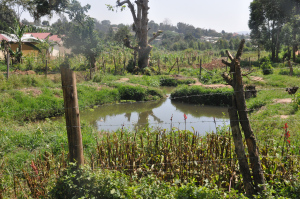
The Banyankole are one of the several major ethnic groups in Uganda. They live in south-western Uganda. Each of the Banyankole’s dozens of clans and sub clans regard a living thing such as an animal, amphibian, a bird or plant with special awe.
Victor Tibihika of Rwakaringura in Kizinda, Bushenyi district is one of the many members of the Abitira sub clan. She believes she is of the same blood with frogs and can never do anything to harm them.
Through their beliefs and cultural practices, Tibihika and several other members of her sub clan protect and conserve frogs and their habitats such as swamps and ponds.
Buryahika Edgar, a cultural researcher engaged in writing a book on Ankole clans and their origins, credits Banyankole forefathers for this.
“Despite their illiteracy, our forefathers conserved the environment they depended on through traditional African beliefs and practices. But the current generation which is literate is doing the opposite.”
There are several other cultural practices in Ankole that were deliberately meant to protect and conserve water resources.
Perhaps some of the outstanding cultural practices included: the communal excavation of water wells and springs locally known as Okutimba Eiziba; communal desilting of wells known as Ofukura Eiziba and collective erection of a hedge of protection around the wells known as Orugo.
Orugo would prevent wild animals from drinking directly from these water bodies. Trenches were constructed around wells and springs to prevent water runoff that would deposit sediments and all kinds of dirt into these water bodies.
Everyone regarded it as a taboo not to participate in these communal cultural practices. But for the people that refused to take part in this work, they would be asked to pay fines set by communal courts. Such fines included buying or brewing local beer that would be drunk communally.
Geoffrey Mahooku Kaparaga, an advocate of Banyankole culture, says that such cultural practices, some of which are still practiced now in Banyankole communities, highlighted the importance of water and its cleanliness to the people of Ankole.
“Our culture defined how we would relate with water, preserving it for the future generation.”
Perhaps if such cultural practices were still widely practiced now, pollution of wells and springs in this region of Uganda would not be a problem.
Disturbingly, environmentalists say up to 99 percent of surface water sources such as wells, springs, streams, lakes and rivers in this region are contaminated with several pollutants including faecal matter and agricultural wastes. Such water may contain worms, protozoa, bacteria and viruses that, if consumed, can cause hepatitis, typhoid, cholera and diarrhea.
According to UN Water, every year, more people die from unsafe and contaminated water than from all forms of violence, including war. Most victims are in developing countries like Uganda.
Ian Atamba, an environment and agriculture specialist working with the agency that oversees forests in Uganda — NFA notes that there is an urgent need for a cultural turn to Integrated Water Resource Management (IWRM) saying that this would conserve water for the future generations.
“Environmental conservation that devalues indigenous knowledge, traditions and norms of the benefiting communities is not sustainable.”
By Fredrick Mugira (Water Journalists – Africa)
This story was produced under the aegis of the CSE Media Fellowships Programme for the Global South.
Scientists pick holes in Canada, China, Ethiopia, Morocco’s INDCs
New analysis from the Union of Concerned Scientists (UCS) has examined how national climate pledges from China, Canada, Ethiopia and Morocco intend to limit greenhouse gases in the agriculture, forestry and other land use (AFOLU) sector. UCS finds that, despite vast potential to mitigate AFOLU carbon emissions, China and Canada set their bars low compared to developing nations Ethiopia and Morocco, and fell short in laying out the specific details of their plans.
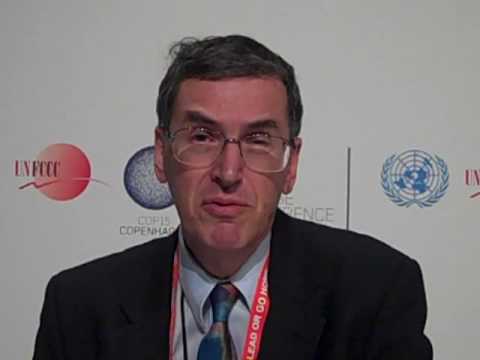
The report, “The Land Sector in the Second Wave of INDCs: Intended Climate Contributions of China, Canada, Ethiopia, and Morocco,” analyses these countries’ intended nationally determined contributions (INDCs) – nation-specific action plans outlining how they plan to reduce their global warming emissions – based on transparency, ambition, accounting standards and proposed actions. Countries are releasing their INDCs in advance of the United Nations’ climate conference (UNFCCC) in Paris this December.
“With land use sector emissions responsible for one-fourth of total global emissions, it’s essential that countries strive to realise their full potential to reduce carbon emissions in this area,” said Doug Boucher, director of UCS’ Tropical Forest and Climate Initiative. “Their INDCs must also explicitly define their goals and establish a clear framework to implement their plan, monitor its progress and achieve its aims. Otherwise it won’t be possible to reduce global emissions sufficiently to keep global temperatures from rising by more than 2 degrees Celsius.”
China, one of the eight countries that make up 57 percent of all land use sector emissions, has significant potential to reduce such emissions, according to an earlier UCS study titled Halfway There. In its INDC, China committed to increasing forested areas, as well as reducing nitrous oxide emissions through improved rice field management practices to ensure zero fertilizer use growth by 2020. Unfortunately, according to the new analysis, while China’s INDC clearly has ambition, it fails to distinguish which of its established goals resulted from pre-existing policy and which were the outcome of new initiatives.

“It’s hard to tell from China’s INDC if they’re committing to going above and beyond the status quo to do their part to reduce global warming emissions in the land use sector, or if they’re simply maintaining their current momentum and putting previously planned actions to paper,” said Kalifi Ferretti-Gallon, the report’s lead author.
Canada’s INDC is also problematic on land use, the analysis reveals. In addition to weaknesses in transparency, specificity and ambition, Canada’s AFOLU plans will omit naturally occurring emissions, such as the destruction of forests through fire or disease, from its land use accounting.
“This strategy would be understandable if such natural contributions were truly beyond human control,” said Boucher. “However, much of Canada’s forest-related emissions result from forest fires and beetle infestations, both of which are affected by human management and should be taken into account.”
Given that the land use sector makes up the majority – 88 percent – of Ethiopia’s global warming emissions, it is unsurprising that the country’s INDC primarily proposes to cut emissions through improved forest and agriculture management policies. One caveat concerning Ethiopia’s strategy is that their impressive carbon emissions reduction goal does not specify the extent which they will be able to reduce their emissions if they cannot obtain external monetary contributions.
“While Ethiopia’s INDC has outdone China’s ambition and is more forthcoming than Canada’s, their dependence on international financing creates a level of uncertainty,” said Boucher.
Of the four countries examined in this analysis, Morocco’s INDC ranked the strongest. By modernising their agricultural sector, establishing policies to increase forest areas, and rehabilitating existing ecosystems, the country plans to reduce all-sector emissions 13 percent by 2030 through their own efforts or 31 percent in that same timeframe if given international monetary support.
“China and Canada’s strategies to reduce land sector emissions pale in comparison to the priority and specificity Morocco gives it in their INDC,” said Ferretti-Gallon. “Additionally, unlike Ethiopia’s plan, Morocco confirms that action is possible, even without external international financing. Morocco has shown a model that other developing nations should emulate in terms of both crafting a strong INDC and taking advantage of the enormous potential to reduce carbon emissions in the land use sector.”
According to the UCS, it puts rigorous, independent science to work to solve the planet’s most pressing problems. Joining with citizens across the country, it combines technical analysis and effective advocacy to create innovative, practical solutions for a healthy, safe and sustainable future.
PACJA: Paris climate deal should tackle damages, not just causes
Secretary General at the Pan African Climate Justice Alliance (PACJA), Mithika Mwenda, has said that negotiators must unite and push loss and damage into a fair and equitable climate deal for Africa’s most vulnerable people.
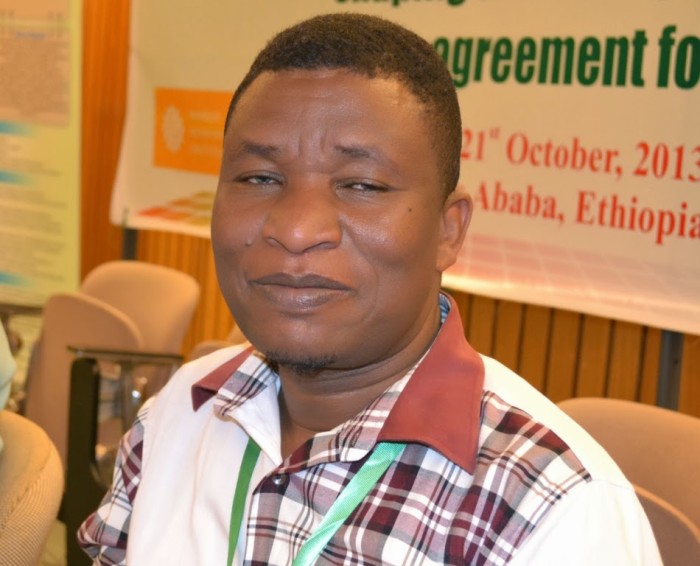
Commenting on the outcome of the recently held climate negotiations in Bonn in Germany, Mwenda remarked that Africa, small island states and the least developed countries at the session unequivocally demanded that ‘loss and damage’ should be a stand-alone pillar of the Paris deal.
He underlined the need to scale up adaptation finance to a level that will help the poor people build resilience because, according to him, “we have not mitigated enough and we have not also created an effective adaptation mechanism, we will be forced to deal with inevitable loss and damage.”
“The Paris deal has to tackle the increasing climate damages, and not just the causes,” he added, pointing out that some actors from the developed countries argue that this proposed loss and damage pillar is not only costly, but that it also brings a lack of clarity into the climate agreement.
His words: “We believe that, the fact that it is costly only goes to reflect the real cost of what others are paying for climate change on a daily basis. People in Africa are losing everything they have worked for during their lives to floods, drought and other catastrophic climate change impacts. The issue of cost should be a catalyst for action to be taken rather than being an obstacle for loss and damage to addressed.
“So far, 58 countries have submitted their INDCs and already it shows that these are inadequate to put the world on a safe path. The negotiations in Bonn have been painfully slow. Time will tell whether the trust built up between facilitators and governments will hold up when the political discussions start. Negotiators must make up for the lost time and narrow down the options as we head towards Paris.
“We welcome the support from the G77 Bloc on loss and damage as a step in the right direction; however we need all parties to commit to see it through as a stand-alone pillar in a fair and equitable global agreement in Paris. We are therefore calling on developed member states to join our movement to push loss and damage into the agreement.”
African dams intensify malaria transmission, says study
The study finds that the construction of an expected 78 major new dams in sub-Saharan Africa over the next few years will lead to an additional 56,000 malaria cases annually. It urges future dam projects to consider better disease control measures
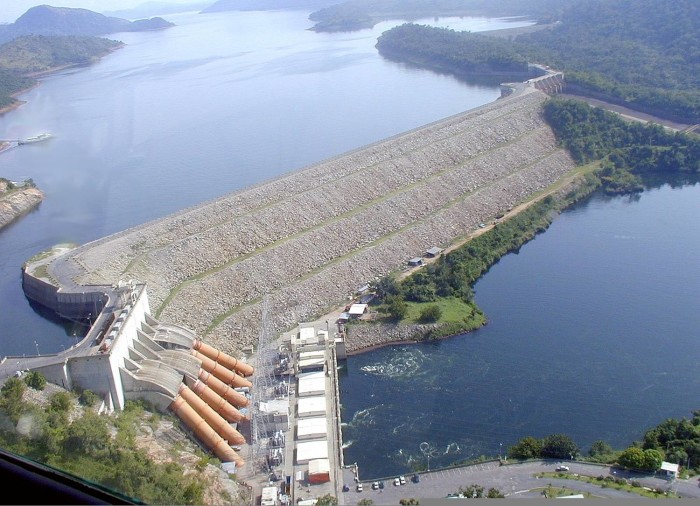
Settlements in close proximity to sizeable dams in Africa such as the Akosombo in Ghana, Kainji in Nigeria, Koka in Ethiopia and Kamburu in Kenya are in grave health danger, a research has revealed.
According to the study, over one million people in sub-Saharan Africa will contract malaria this year because they live near a large dam. The study has, for the first time, correlated the location of large dams with the incidence of malaria and quantified impacts across the region. It finds that construction of an expected 78 major new dams in sub-Saharan Africa over the next few years will lead to an additional 56,000 malaria cases annually.
The research, published in a recent edition of Malaria Journal, has major implications for new dam projects and how health impacts should be assessed prior to construction. Encouraged by the increased volume of international aid for water resource development, sub-Saharan Africa has, in recent years, experienced a new era of large dam construction.
“Dams are at the centre of much development planning in Africa. While dams clearly bring many benefits – contributing to economic growth, poverty alleviation and food security – adverse malaria impacts need to be addressed or they will undermine the sustainability of Africa’s drive for development,” said biologist Solomon Kibret of the University of New England in Australia, the paper’s lead author.
Undertaken as part of the CGIAR Research Programme on Water, Land and Ecosystems, the study looked at 1,268 dams in sub-Saharan Africa. Of these, just under two-thirds, or 723, are in malarious areas. The researchers compared detailed maps of malaria incidence with the dam sites. The number of annual malaria cases associated with the dams was estimated by comparing the difference in the number of cases for communities less than five kilometers from the dam reservoir with those for communities further away. The researchers found that a total of 15 million people live within five kilometers of dam reservoirs and are at risk, and at least 1.1 million malaria cases annually are linked to the presence of the dams.
“Our study showed that the population at risk of malaria around dams is at least four times greater than previously estimated,” said Kibret, noting that the authors were conservative in all their analyses.
The risk is particularly high in areas of sub-Saharan Africa with “unstable” malaria transmission, where malaria is seasonal. The study indicated that the impact of dams on malaria in unstable areas could either lead to intensified malaria transmission or change the nature of transmission from seasonal to perennial.
Previous research has identified increased malarial incidence near major sub-Saharan dams such as the Akosombo Dam in Ghana, the Koka Dam in Ethiopia and the Kamburu Dam in Kenya. But, until now, no attempt has been made to assess the cumulative effect of large dam building on malaria.
Malaria is transmitted by the Anopheles mosquito, which needs slow-moving or stagnant water in which to breed. Dam reservoirs, particularly shallow puddles that often form along shorelines, provide a perfect environment for the insects to multiply. Thus dam construction can intensify transmission and shift patterns of malaria infection. Many other water bodies, including small dams, ponds and natural lakes and wetlands, provide breeding habitat for mosquitoes. In total, there are an estimated 174 million cases of malaria in sub-Saharan Africa per year.
Many African countries are planning new dams to help drive economic growth and increase water security. Improved water storage for growing populations, irrigation and hydropower generation are indeed badly needed for a fast developing continent. But the researchers warn that building new dams has potential costs as well as benefits.
“Dams are an important option for governments anxious to develop,” said Matthew McCartney of the International Water Management Institute (IWMI) and a co-author of the paper. “But it is unethical that people living close to them pay the price of that development through increased suffering and, possibly in extreme cases, loss of life due to disease.”
The study notes that despite growing evidence of the impact of dams on malaria, there is scant evidence of their negative impacts being fully offset.
The authors make recommendations about how the increased malaria risk can be managed. Dam reservoirs could be more effectively designed and managed to reduce mosquito breeding. For instance, one option is to adopt operating schedules that, at critical times, dry out shoreline areas where mosquitoes tend to breed. Dam developers should also consider increasing investment in integrated malaria intervention programs that include measures such as bed net distribution. Other environmental controls, such as introducing fish that eat mosquito larva in dam reservoirs, could also help reduce malaria cases in some instances.
“The bottom line is that adverse malaria impacts of dams routinely receive recognition in Environmental Impact Assessments, and areas around dams are frequently earmarked for intensive control efforts. The findings of our work hammer home the reality that this recognition and effort – well-intentioned though it may be – is simply not sufficient,” said co-author Jonathan Lautze, a researcher at the International Water Management Institute’s office in Pretoria, South Africa. “Given the need for water resources development in Africa, malaria control around dams requires interdisciplinary cooperation, particularly between water and health communities. Malaria must be addressed while planning, designing and operating African dams.”
Why Nigeria should hasten and submit climate action plan
At the 21st Session of the Conference of the Parties (COP 21) to the United Nations Framework Convention on Climate Change (UNFCCC) slated for December 2015, climate negotiators from all over the world will converge on Paris, where they will deliberate on concrete Co2 emissions reduction plans to be incorporated with total renewable energy road maps geared towards limiting and regulating human activities that could alter the earth.
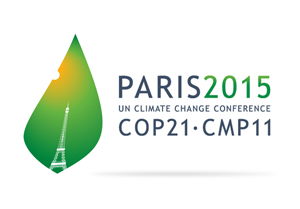 In reference to pre-industrial period, the world currently warms at 0.8 degree Celsius increase. Unarguably, Nigeria’s resultants version of the increase have been in the form of desert encroachment in the North, temperature rise, and erosion. Evidence is shown in tragic occurrence even as we speakfollowing flooding incidents nationwide, as thousands of domestic animals have been reported dead while hectares of farmlands were submerged.
In reference to pre-industrial period, the world currently warms at 0.8 degree Celsius increase. Unarguably, Nigeria’s resultants version of the increase have been in the form of desert encroachment in the North, temperature rise, and erosion. Evidence is shown in tragic occurrence even as we speakfollowing flooding incidents nationwide, as thousands of domestic animals have been reported dead while hectares of farmlands were submerged.
Truth must be told, if no action is in sight, the average global temperature will likely continue to increase unabated; and a further increase will be detrimental to human lives and our precious planet earth.
Towards limiting the average global temperature to less than 2 degree Celsius, the elders forwarded an epistle to World leaders, their epistle explicitly stated that: “If action is not taken immediately to stop and reverse current climate trends, we shall face a world with average global temperatures several degrees higher than when we were children”.
In achieving this, it is essential for all nations to draw concise feasible master plans aimed at phasing out fossil fuels towards reaching carbon neutrality target by 2050. Prior to that, assessing progressions of climate change adaptation of Intended Nationally Determined Contributions (INDCs) every five years will keep consenting nations on their toes in finally reaching the milestone of carbon neutrality by 2050.

As stipulated by United Nations (UN), September ending has been slated as deadline for pledges submissions. A recent update by Carbon Brief indicated that European Union (EU) and over 30 countries have shown seriousness towards the course. Algeria, Democratic Republic of Congo (DRC), Benin, Kenya, Ethiopia, Morocco and Gabon are the African countries that have submitted their pledges to the UN on how they intend to reduce greenhouse gas emissions emanating from their respective countries. Frankly speaking, negative impacts of climate change in addition to low standards of living in developing countries could be catastrophic. It is therefore expedient for other African countries to be fully committed and speedily submit their pledges by following similar suits of committed African countries. As deadline approaches, till now, Nigeria’s carbon emission pledge remains veiled.
In dousing the tension, the Director, Climate Change Department, Federal Ministry of Environment, Dr. Samuel Adejuwon, stated that Nigeria envisions submission of her pledge in September. By now, the marshal plans should have been concluded and vetted. Before final submission, an inquiry cursory gaze on the concluded plans should be done. Does the drafted plan address gas flaring management? Is Co2 reduction plan to be presented feasible? How effective is Nigeria’s Total Renewable energy transition programme? Until these questions are effectively answered, Nigeria can then be trailing the path of being wholeheartedly integrated into INDCs.
Just as below performance of Millennium Development Goals (MDGs) has been attributed to skewed implementation plans, it should therefore be noted that pledges submissions to UNFCCC is not important as pledges implementation. Proactive action is aggressively needed in proper implementation because; this is the major integral part of transcending the proposed UN climate conference resolutions into reality. Great commitments need to be exhibited by governments, legislatures and citizens in reaching the set goals; these will be the driven forces for plans implementation otherwise, the gathering might be a hoax.
“We believe that climate change must be viewed not only as a danger to natural systems, but also as a direct threat to human survival and well-being. We are convinced that this negotiation process must not be viewed as a traditional series of governmental trade-offs, but as an urgent international effort to safeguard human lives, homes, rights and livelihoods,” says Maumoon Abdul Gayoom, President of the Maldives.
All hands must therefore be on deck in ensuring that COP21 is a success. This is the time for world leaders and citizenries to roll up their sleeves and jointly bounce to productive actions, this is the time for stakeholders to take up their arsenals in combating climate change threatening the planet earth because, failure of the conference is tantamount to unilaterally destroying the earth while also denying future generations the rights to unaltered environment.
By Odewale Abayomi Joseph (Climate Tracker) (Abayo4luv@gmail.com). A graduate of Civil Engineering from the Obafemi Awolowo University, Ile-Ife, Nigeria, Odewale wrote from Oyo

